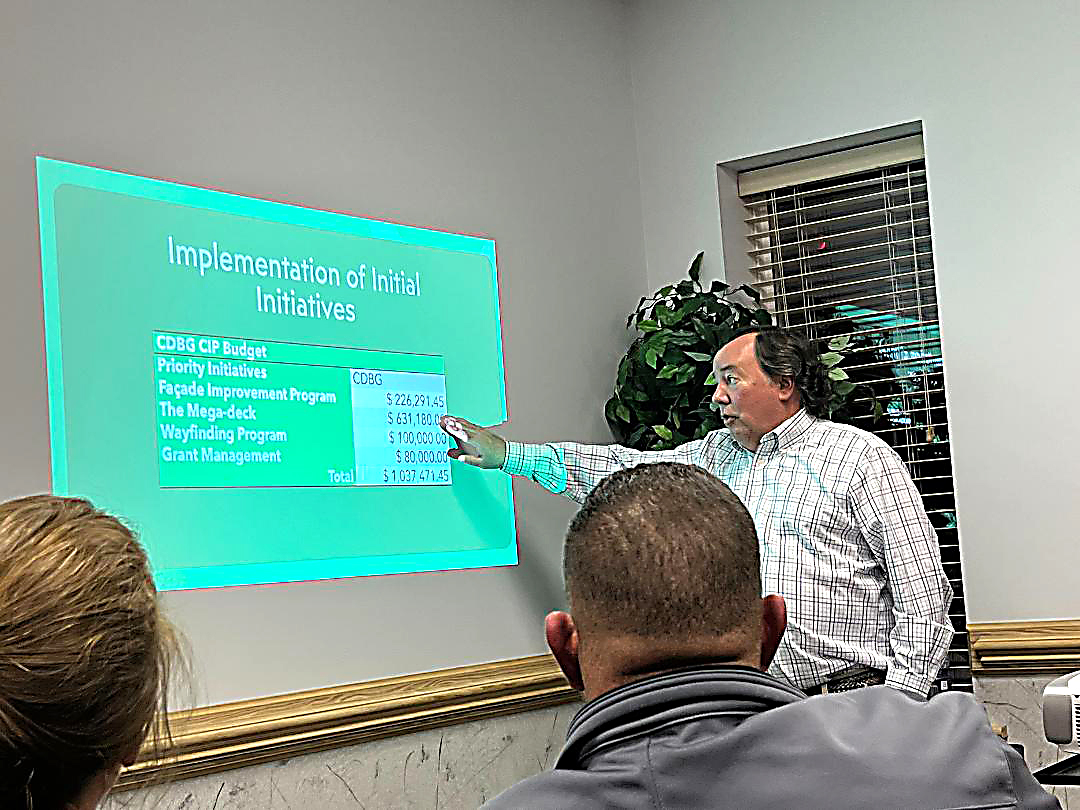MORGANTOWN, W.Va. — Creativity, innovation and empowerment are driving forces of West Virginia University exemplified through the arts which serve communities with infinite possibilities for self-expression.
From live theater and music performances to hands-on art projects, the WVU College of Creative Arts provides opportunities for residents in communities throughout the Mountain State to participate directly in artistic endeavors and express their creativity.
(Editor’s Note: This is the fourth in a series of news releases highlighting ways WVU is serving the Mountain State. Access photos, video and additional resources in a Media Toolkit from WVUToday.)
The School of Music’s Steel Drum Ensemble will travel to Boone County to put on a show for elementary school students later this spring.
The WVU Bluegrass Band, specializing in Appalachian musical traditions, will also visit elementary schools throughout the Mountain State starting at the end of March.
“We go out into the schools to show that WVU is a place that accepts everyone and that it is here to support the things that make our state and our region special,” said Travis Stimeling, professor of musicology.
“I want to push back against the notion that traditional practices and culture must be let go of if you want to make something of yourself. Traditional practices of all sorts should be celebrated.”
For more than 30 years, the WVU Puppet Mobile, part of the School of Theatre and Dance, has been on the road, carrying students and faculty to performances in front of audiences across West Virginia that may not otherwise have access to the arts.
“To see a live show and to see people performing for you and to be asked a question and then to see these things up close, that’s an amazing thing for kids, who in some cases, have never really seen such performances,” said Mary McClung, professor of costume design and puppetry and director of costuming.
“It’s being in a room and sharing something communally. There’s something magical about that.”
Students with the Puppetry program, one of only two of its kind in the United States, are touring West Virginia elementary schools this spring with two new marionette shows, “Goldilocks and the Three Bears” and “Little Red Riding Hood.”
“We are teaching our students how to be professionals,” McClung said. “You have to be here by the deadlines. You have to present yourself in a certain way. Also, they’re learning how to emote and how to perform in front of a real audience.”
McClung personally understands the impact the arts can have on communities. Growing up in Barbour County, without television and few other outlets, she was left with her imagination.
“I grew up in the country, and we didn’t have a whole lot of arts programs, but I was always running around in the woods, making my own stories,” McClung said.
Jackson Berhow, a graduate student from Vancouver, Washington, oversees the scheduling of the Puppet Mobile tours. “It’s wonderful to get out and see reactions from people, everything from pure joy to surprise along with genuine interest,” he said.
The Art Museum of WVU is dedicated to educational outreach and welcomes group tours from schools and community groups. The Jacknowitz Travel Fund pays for school visits to the museum for primary and secondary students, customized programs at various grade levels, snacks and art supplies for hands-on activities.
“The Art Museum of WVU is a community institution that strives to create meaningful encounters with art for all citizens of West Virginia,” said Heather Harris, service assistant professor of art history and curator of education at the Art Museum of WVU. “This means bringing as many people as possible into the galleries to see the current exhibitions.”
During the pandemic, the Art Museum remained connected with community members by sending out approximately 2,000 art kits to students in Monongalia, Preston, Harrison and Upshur counties. The kits, created with grant funding from the Art Bridges Foundation, contained information about West Virginia artist Blanche Lazzell and materials to make prints.
“We were able to teach elementary school students about a significant West Virginian and provide them with the tools to work in Lazzell’s style from right in their own homes,” Harris said.
Community outreach is a component of the sculpture program in the School of Art and Design. One project involved a collaboration between Dylan Collins, associate professor of sculpture, artist Jo Nelson, Mollie Toppe, a Wetzel County Extension agent, and Wetzel County 4-H youth. Together, they worked on the Wetzel County Mural, a public mural highlighting their art on aluminum.
VIDEO: Sand, Aluminum and Fire: A Wetzel County 4-H Sculpting Project
Additionally, the College of Creative Arts hosts arts exploration days in schools and holds many summer academies on campus for young people focused on acting, music, dance and visual arts.
“We’re offering young people possibilities,” McClung said. “There are so many options out there. They don’t have to go in one way. They can do performances themselves. They can tap into their own creativity right at home.”
Read more about how WVU serves West Virginia.
MEDIA CONTACT: April Kaull
Executive Director of Communications
University Relations
304-293-3990; [email protected]

